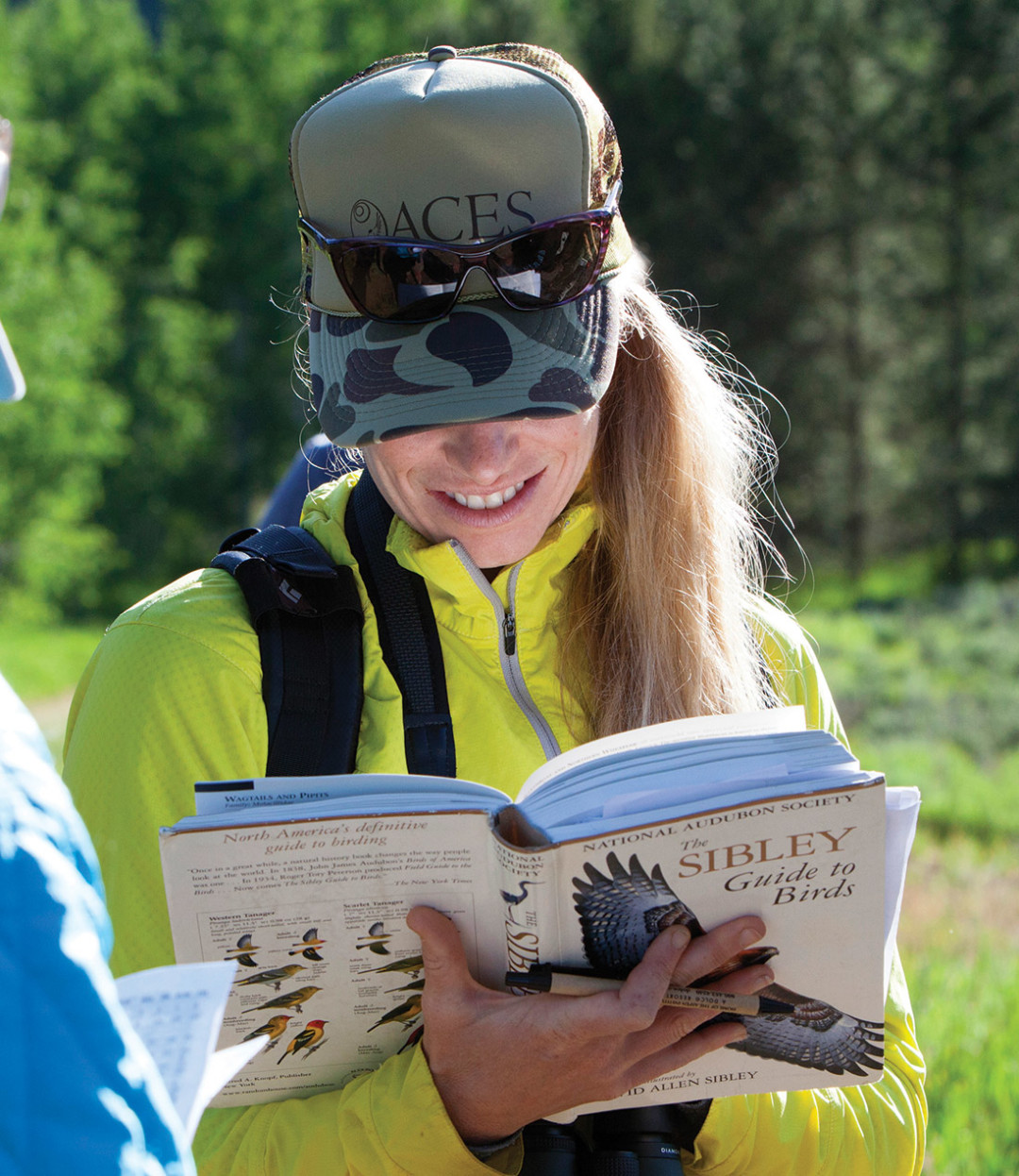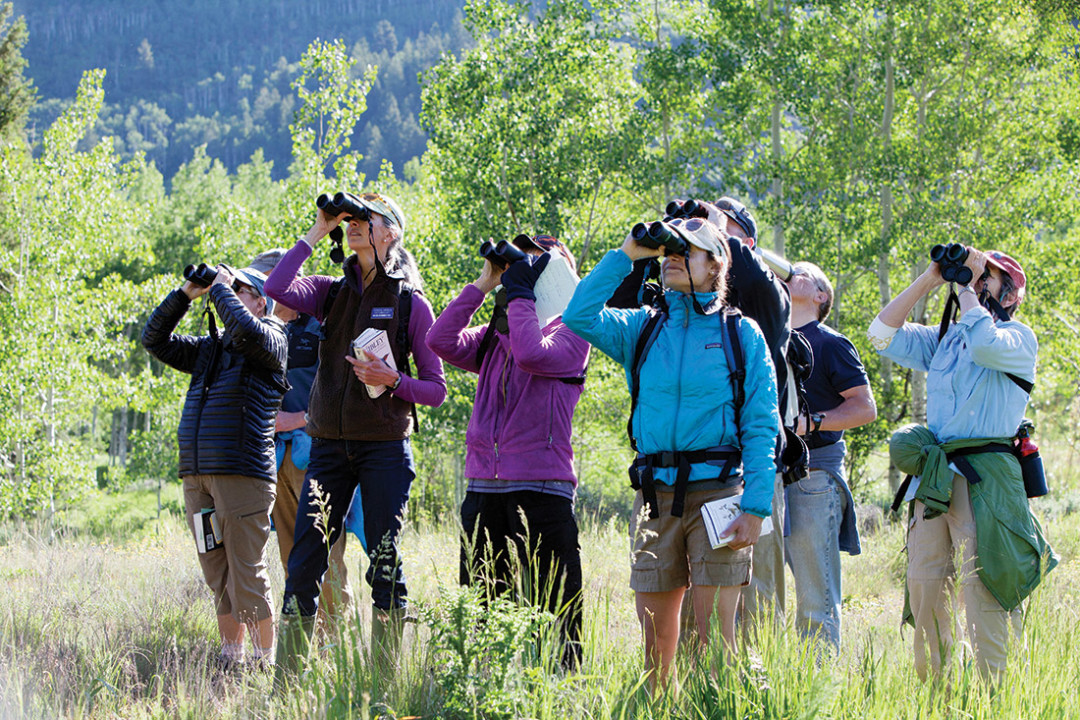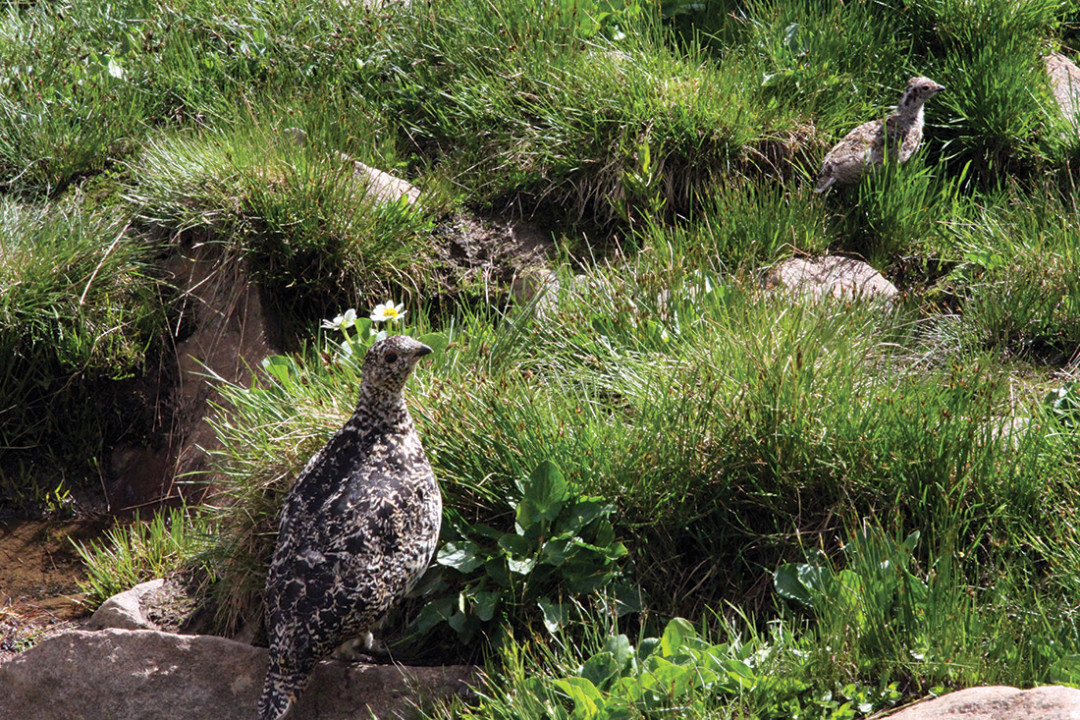The Thrills of Birding in Aspen

There are roughly 240 species of birds in the Roaring Fork Valley. Last year, Rebecca Weiss laid eyes on 154 of them. Spotting such an impressive slice of the local avian spectrum didn’t happen casually for Weiss; it was the culmination of what bird-watchers call a “big year,” a formal attempt to identify as much of the winged world as possible from January 1 until December 31.

Not long ago, the average Aspenite would have had trouble naming a tenth of the birds Weiss crossed off her checklist. Today that’s changing, due in part to the birding programs Weiss runs with her fellow naturalists at the Aspen Center for Environmental Studies (ACES). Birding, believe it or not, is booming in Aspen, with names like MacGillivray’s warbler and the American dipper increasingly on the lips of starling-eyed locals.
ACES has offered birding instruction since the 1970s. For most of that time, it was summer classes oriented to the serious birder, including a five-day intensive course that could earn students grad-school credit. But a few years ago, ACES expanded its birding courses to year-round and shifted their focus to attract a more general community—which flocked to the classes like hummingbirds to nectar.
The appeal, Weiss asserts, is the innate human desire to connect with the natural world. “I see it time and again with my birding-program participants,” she says. “When people experience a special encounter—for example, watching a kingfisher make a successful dive for a fish at close range on Hallam Lake—it is often a pivotal moment that produces a euphoric feeling of oneness and kinship with nature. It can even bring up flickers of childhood memories. It’s magical.”

Before long, many of those participants are raving about birding to friends, consumed with notching a red crossbill sighting on their bird-watching belt.
ACES’ Birding Basics classes at Hallam Lake (June 24 and July 8; $20 for members, $30 for nonmembers) begin with a short lesson focused on how to use loaner binoculars, how wading birds and water fowl differ in their behavior, how to locate those birds’ perches, and what the birds will likely be doing, which is usually something related to food. “Then we take it from what nature delivers,” Weiss says.
Group outings without instruction take place every Tuesday morning from June 2 through October 6 and once a month thereafter. (The crack-of-dawn start times change with the daylight; see aspennature.org for the complete schedule, which includes seasonal migration counts and birding on Independence Pass.) Occasionally, a birding rock star is on hand. Dick Filby, the founder of the Rare Bird Alert and a man Weiss describes as “a funny, smart Brit who travels 90 percent of the year to bird,” has presented about birds at ACES and attends the annual Christmas bird count. Al Levinton, the inspiration for the character played by Steve Martin in the 2011 comedy The Big Year, lives in Aspen and, of course, birds in the valley.

The bigger birding world comes to ACES as well. The nonprofit takes calls from traveling birders looking to spot species on their life lists, and it can arrange for private outings with staff naturalists. Late winter this year, ACES helped a visitor spot all three species of rosy-finch—“a pretty special bird that’s on real birders’ lists,” Weiss says. But they couldn’t locate a white-tailed ptarmigan, which lives year-round in tundra above tree line and whose plumage, pure white in winter, molts to blend in perfectly with the ground in summer (as seen above), making it one of the valley’s toughest birds to spot.
And so the elegant obsession continues.













































